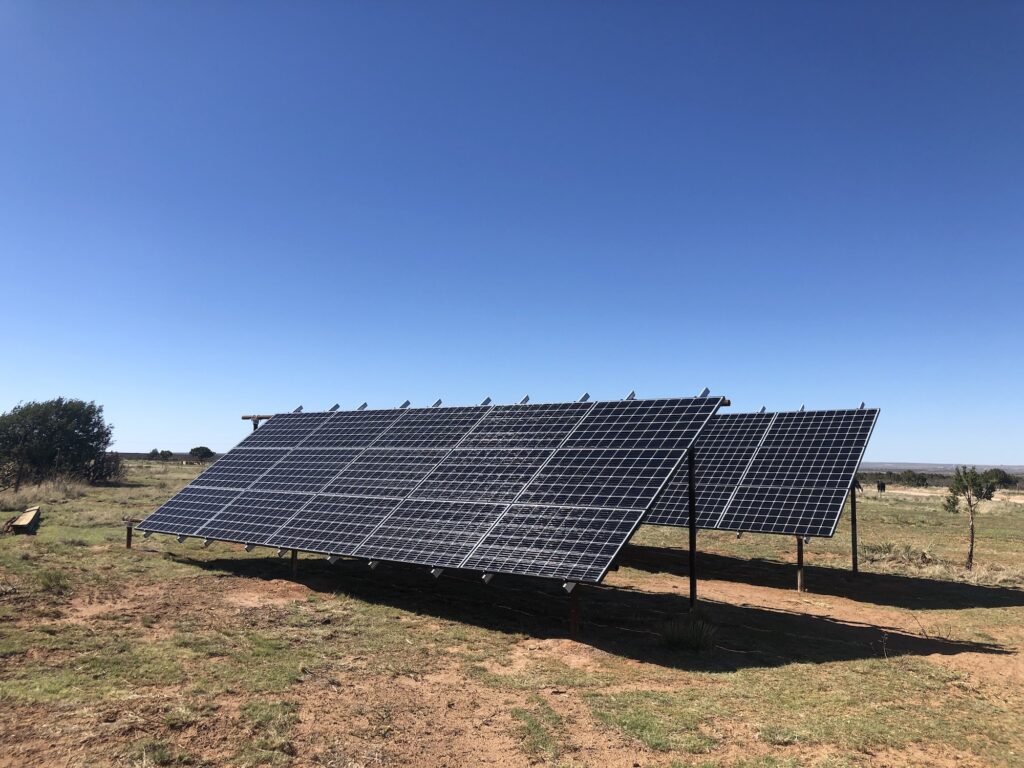
Raina Hornaday
Born into a farming/ranching family in eastern New Mexico, Raina Tillman Hornaday has been a key player in Texas renewables. Currently General Manager and Co-Founder of Caprock Renewables since 2015, Raina spent more than 10 years as GM and co-owner of Cielo Wind Power, the largest independent wind developer in Texas with more than 1 GW of operational projects. She’s been a board member of the Texas Renewable Energy Industries Alliance and CleanTX. Incredibly busy running a business and parenting, Raina was gracious to talk with us about her work.
TXSES: How did Caprock Renewables come to be?
RH: I come from a farming and ranching background in eastern New Mexico. In fact, the Caprock formation is where our family’s homestead is located. Because of that upbringing, I developed a strong connection to the land and earth stewardship. There are immense environmental challenges out there. I like to say that landowners are the ultimate environmentalists because we deal daily with the elements: water, wind and sun to the extreme. Next to drought, wind was and still is a huge factor in our lives. The wind starts building in Roswell and by the time it reaches the Caprock, it takes off! Before grid transmission, every farmer and rancher had wind generators that produced electricity and pumped water from wells. In the 1980s, my dad partnered with a California wind company that installed an 80-meter meteorological (MET) tower to gather data. I founded Caprock in 2015 to help landowners take advantage of additional income by harnessing renewable resources.
TXSES: Did the MET tower inspire you to pursue renewables?
RH: I was a farm and ranch writer for a rural newspaper publication. In that capacity, I was invited to attend the Texas Renewable Energy Roundup in 2002 where I met several wind developers who I still work with today. We signed a lease with RES and provided the met data we gathered over the years from our dry land wheat farm. In 2004, Cielo Wind Power purchased the development and built the Caprock Wind Ranch. I managed operating assets for Cielo, developed a large number of utility-scale wind projects in ERCOT and established an office and business in Santiago, Chile as well. I established an Earth Day Scholarship program to support local communities we partnered with and enjoyed working with the landowners we partnered with. When I left Cielo in 2015, I became active with the Texas Renewable Energy Industries Alliance and still serve on the board of CleanTX who we merged with in 2020.
TXSES: Things have gone well for you. Tell us about some of your projects.
RH: We’ve been busy! Over the past decade, we’ve developed more than 1,000 MW of solar and storage projects throughout ERCOT. Two of our developments were recently acquired by Lightsource BP and ENGIE North America.

10kW ground mount at Raina’s ranch in Eastern New Mexico
TXSES: Being a landowner developer, you have unique insight into working with other landowners.
RH: I really love being involved with the community. As a landowner and developer, I understand the long-term commitment that comes with a renewable development agreement and the importance of going over them with landowners. The farming/ranching industry is changing. The future generations are not necessarily staying on the farm. They are going to college and often not going back home. And then there is the drought. But renewable energy can save the day, over and over. When I work with school districts and counties, I see what a great opportunity they have to work with the large renewable energy companies. Over their lifetime, the current fleet of utility-scale wind and solar projects in Texas will generate between $4.7 billion and $5.7 billion in new tax revenue for local communities. We can also provide resources for the schools to help them educate the students about the rich energy resources in Texas including renewables.
TXSES: Aren’t you interested in agrivoltaics?
RH: Yes! In fact, it’s the capstone project for my master’s in energy from Texas Tech. It will also be a white paper for CleanTX. I’m working with farmers and with the growth of utility-scale solar in Texas, it couldn’t be a more opportune time to promote agrivoltaics to increase pollinators as well as to stabilize the soil. This is my pet project! On large solar installations, we’re taking hundreds of thousands of acres out of production. This makes agrivoltaics crucial! According to the National Renewable Energy Laboratory, solar is expected to utilize 3 million acres of land by 2030 and 6 million by 2050. Planting native crops beneath the solar panels is an innovative technology that helps farmers utilize their farmland to produce renewable energy without abandoning the land. Crop yields and increased economic opportunity are all benefits of agrivoltaics.
TXSES: What’s your workforce look like? What kinds of skills do you look for when staffing?
RH: We’re a boutique developer. We assemble large projects for IPP’s (independent power producer) and utilities to build, own and operate. My top need is always for project managers. It’s highly competitive because they’re in high demand.
TXSES: Is it a challenge being a small boutique developer competing with the big boys?
RH: That’s definitely a challenge. Large developers have much greater resources than we do. But even more of a challenge is having good, sound policies that support our work financially. It’s why we talk about the ‘solar coaster.’ There have been so many starts and stops with the ITC (investment tax credit) and the PTC (production tax credit), but with the passage of the Inflation Reduction Act, we finally have some certainty and can plan with more confidence.
TXSES: What’s surprised you the most with your work?
RH: The lack of policies around development. Projects carry a lot of risk which make them challenging to find and secure the funds needed to develop the projects. Also, the amount of global interest in renewable development in ERCOT.
TXSES: Where do you see Caprock Renewables in five years?
RH: Now that we have successfully developed several projects, we will focus on the development of the other projects in our pipeline. We will also continue to evolve by reviewing the services we offer. We receive many requests from landowners, investors and other developers to provide development consulting as well as to expand our offerings to O&M and asset management. We’ve also considered adding C&I (commercial and industrial) and possibly a residential arm into our portfolio.
TXSES: Lots of work ahead! Thanks for the conversation, Raina. Best of luck!!
